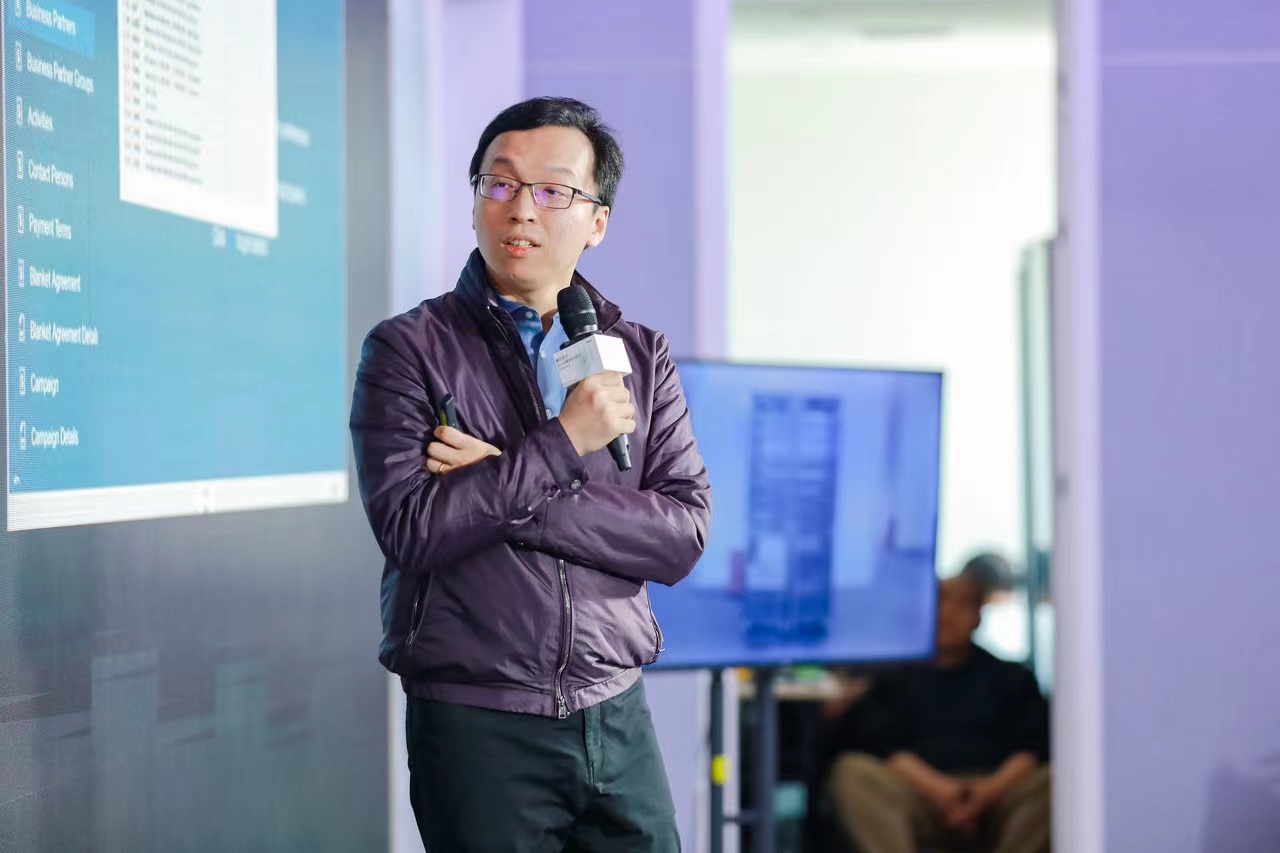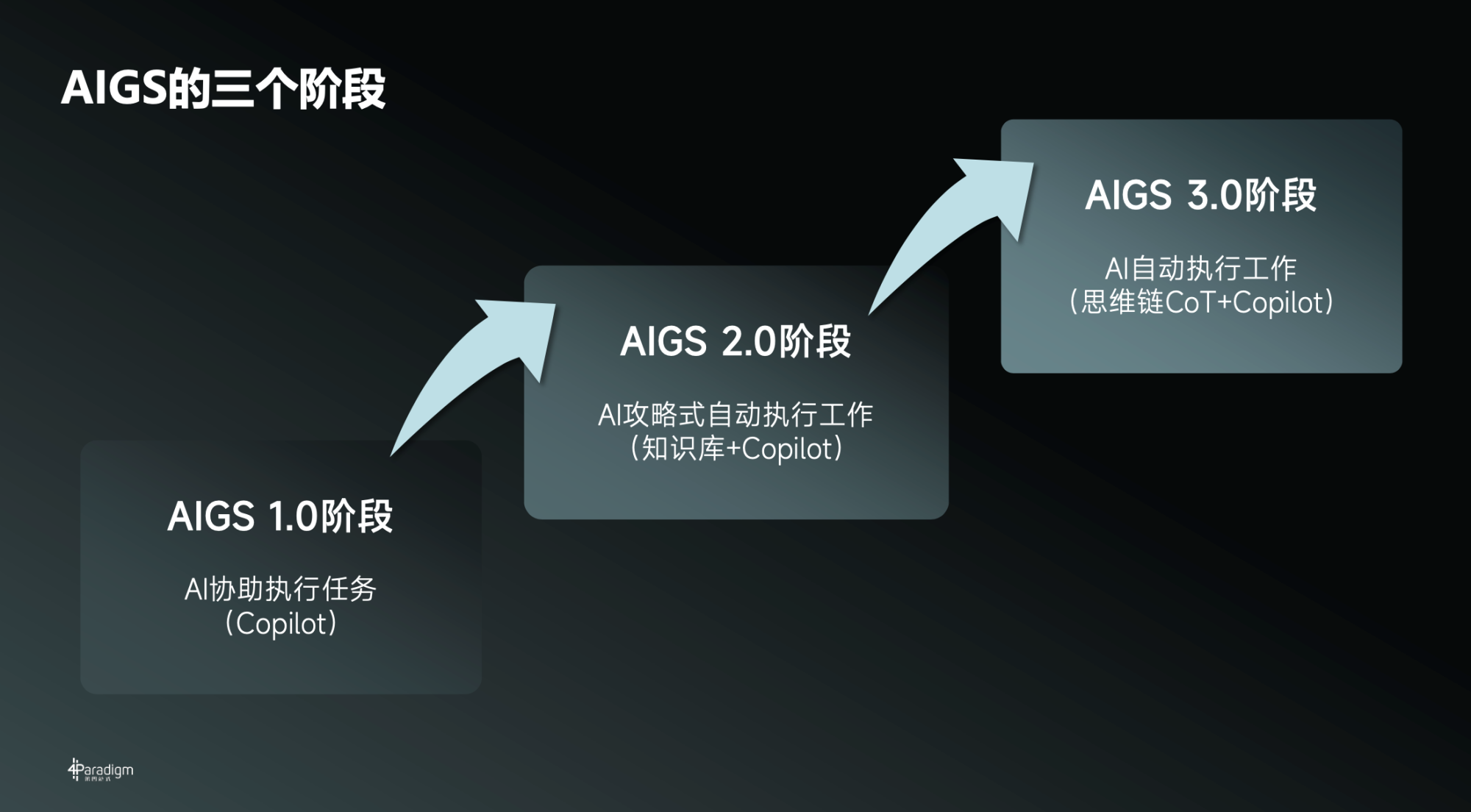The fourth paradigm releases the "formulaic" model to reconstruct enterprise software (AIGS) with generative AI.
Under the ChatGPT craze, a new entrant has been added to the domestic artificial intelligence model.
On April 26th, Fourth Paradigm announced the launch of its GPT model product "Formula 3.0", and put forward AIGS strategy (AI-Generated Software) for the first time, that is, generative AI refactoring enterprise software. "Style Theory" will be positioned as a new development platform based on multi-modal large model, which will improve the experience and development efficiency of enterprise software and realize AIGS.
"C-end products have approached the upper limit of user experience, while enterprise-level software at B-end is often a very complicated execution system, and it is not too much to pile up more than a dozen layers of menus and thousands of functions." Dai Wenyuan, founder and CEO of the fourth paradigm, said, "At present, the extremely complex interactive experience of these B-side software and the extremely low development efficiency brought by complexity just leave enough room for reconstruction and transformation of generative AI."
Dai Wenyuan said, "In the past, it was difficult to call the functions of enterprise software through human language (natural language). Now, when we have stronger semantic understanding and generation capabilities, coupled with the ability of GPT task translation, task distribution and reasoning, we can call the functions through better’ dialog-style’ interaction, and we no longer need to find a function under a menu directory of more than ten levels."
"Shi Shuo 3.0" has the ability of writing, drawing and programming.
It is reported that "Expression 3.0" can handle queries and tasks in the form of video, image, voice, text, etc., and convert these information into instructions that can be read by user software. After the software outputs a response, the results can be displayed.
In order to express that "Style 3.0" is not an online call to ChatGPT, Dai Wenyuan asked the team to cut off the public network and visit the intranet cluster at the scene. Later, he demonstrated the ability of "Shi Shuo 3.0" big model to understand pictures, talk in multiple rounds, write novels and draw pictures quickly, and the ability to complete more complicated "packing" operations and write codes on the spot through reasoning ability. For example, if you ask "Do you have any recommended places to travel to Silicon Valley on May 1", you will feedback information about attractions such as Google and Stanford University.
In Dai Wenyuan’s view, to achieve AIGS, a big model does not necessarily need to be a generalist with extensive knowledge and a decathlon champion. What is more important is that the model has the ability of Copilot and CoT(chain of thoughts).

Dai Wenyuan, founder and CEO of the fourth paradigm
At the scene, the fourth paradigm also revealed the iterative process of "formula theory"-"formula theory 1.0" is the first generation product launched after the explosion of ChatGPT, which has the ability to generate language and solve the three major problems of content credibility, data security and cost in the application of GPT technology; On the basis of language ability, "Shi Shuo 2.0" adds multimodal input and output capabilities such as text, voice, image, table and video, and increases the Copilot capability of enterprises. In order to connect with the internal application library and private data of enterprises, analyze information and data, answer employees’ inquiries or perform related tasks, and become business assistants from knowledge assistants; On the basis of generative and language ability, "Formula 3.0" applies Copilot and COT (multi-step reasoning, complex task splitting and data flywheel) to transform traditional B-end enterprises.
"To transform enterprise software, the big model cannot only have language ability. Formula 2.0 adds multimodal and Copilot, because the data in many enterprise software is multimodal, and Copilot can translate human instructions into which API to call in the background. " In the previously released Demo of Formula 2.0, store employees issued instructions to Formula 2 through interactive means such as voice and text. After the formula was understood, the networked store monitoring software called out the pictures of the kitchen without a mask, and directly output the pictures to employees in the form of a dialog box.
It has been of great value for the big model to call the built-in functions and data of the software to complete the task in a "dialog box". However, employees will also face complex tasks when using enterprise software, requiring people to perform functions in sequence.
Therefore, Equation 3.0 emphasizes Copilot and thinking chain CoT, which has stronger reasoning ability. After learning a lot of data and strategies, it can form intermediate logical reasoning steps, so as to split and perform complex work.
According to public information, the fourth paradigm was established in 2014, mainly serving enterprises, focusing on the decision-making AI field and providing platform-centric AI solutions. At present, the company’s solutions have been applied to finance, retail, manufacturing, energy and electricity, telecommunications and medical industries. The latest prospectus shows that in 2022, the revenue of the fourth paradigm reached 3.083 billion yuan, a year-on-year increase of 52.7%.
The path of AIGS is divided into three stages.
"When BERT came out, the Paradigm Research Institute began to pay attention to and invest in this technical field. After GPT3 came out, it was more clear that it was going in this direction. However, compared with this year’s investment, there is definitely a gap in the past few years. ChatGPT’s greatest help to us is that the confidence of the whole market has been adjusted from 0 to 0, and the deterministic investment has been greater. Later, it will be pushed to the market by becoming a product and becoming a commercial route. " Dai Wenyuan revealed.
Compared with domestic big models, the fourth paradigm thinks that there will be more big models in China. The big model is a new productive force, and everyone has to have a big model as a base, so the threshold for entering the game is really getting higher. But after reaching this threshold, the focus is on how to choose the direction.
The fourth paradigm thinks that the greater opportunity lies in transforming the whole enterprise software industry, which is the direction of AIGS. The technical direction of the big model is that Copilot can be controlled (execution can be controlled, mistakes can be corrected) and COT (chain of ideas, multi-step reasoning, complex task splitting) can be used to form a data flywheel (for example, putting data and processes in a vertical field into a big model can soon form a thinking chain of the model in this field).

The fourth paradigm summarizes the path of AIGS into three stages: in the first stage, Copilot mobilizes different information, data and applications as assistants to complete users’ instructions. It is equivalent to having a commander in all enterprise software systems. The commander listens to the user’s instructions, such as "Brighten the photo by 20%".
In the second stage, Copilot+ is based on the "knowledge base" of enterprise rules, and AI can do complex work with reference to the rules, further enriching the ability of "dialog box". For example, after consulting the "portrait beautification" knowledge base, AI can perform the steps of retouching photos.
The third stage, Copilot+CoT (thinking chain). The use behavior of the software system will eventually be learned by the big model, forming AI’s thinking chain in this field, which means that AI can automatically complete the complex instruction of "processing photos better".
The AIGS strategy of the fourth paradigm refers to transforming enterprise software into a new interactive paradigm based on the Copilot+COT capability behind the formulaic model, and constantly learning the use process of software in the new interaction, forming a "thinking chain" of domain software.
At the release site of Formula 3.0, customer representatives from aviation manufacturing, finance, medical care and other industries attended and made live demo demonstrations of the products. In the actual scene demonstration of China’s aviation manufacturing representative enterprises, it and the fourth paradigm jointly transformed an industrial design software based on Copilot technology. In the actual scene demonstration of a medical industry, the "thinking chain" can clearly point out the specific steps of selling drugs.
The fourth paradigm shows that, finally, due to the emergence of new forms of interaction, the development efficiency of enterprise software becomes higher. In the past, functions and execution logic were arranged in the software interface. Every time a function was upgraded, it was necessary to go through prototype drawing, design, development, etc. in cycles, at least at the monthly level. Now, because the "dialog-style" interface is fixed, the function and logic are rewritten at the level of data, API and content, which has become a day-level development efficiency.
It is worth mentioning that, according to the fourth paradigm, in just two months, many enterprises and partners have carried out in-depth cooperation with the fourth paradigm in generative AI.